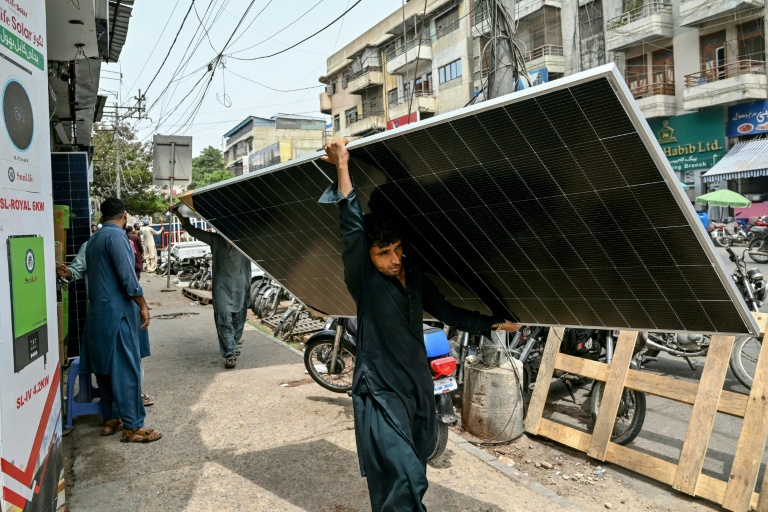Key Takeaways
- Solar power’s share in Pakistan’s energy mix surged from 10.3% in 2024 to 24% in early 2025, becoming the largest energy source.
- The increasing switch to solar, mainly driven by consumers’ frustration with high electricity costs and outages, is straining the national grid.
- The government has implemented new taxes on solar imports amid rising concerns over dwindling grid users and financial burdens on utility consumers.
Rooftop Solar Boom in Pakistan
Pakistan is witnessing a significant shift from reliance on the national power grid to solar energy, aiming to mitigate soaring electricity bills and prolonged outages. Residents, including those from middle- and lower-income households, have turned to rooftop solar panels, making these installations a common sight in cities like Karachi.
Fareeda Saleem, facing an 18-hour power cut daily, installed solar panels at her home by financing her project through selling jewelry and borrowing from family. With a total investment of about 180,000 rupees ($630), she enjoys uninterrupted power in the sweltering heat. This transition reflects a broader trend as solar energy’s contribution to Pakistan’s energy landscape jumped from less than two percent in 2020 to over 24 percent by mid-2025.
Experts recognize Pakistan’s rapid adoption of rooftop solar, with the country now at the forefront of this energy transition. The recent escalation in solar energy adoption is largely attributed to skyrocketing fuel prices, outdated policies, and income strains from successive electricity price hikes. Many households are choosing solar installations despite the initial costs, which are typically recouped within two to five years.
However, this transition is putting pressure on the national grid, already burdened with approximately $8 billion in power sector debt. As grid customers dwindle, the government faces challenges, including contracting costs with independent power producers and rising energy tariffs for remaining consumers. A government report recently highlighted that the solar surge has led to an increased financial burden on grid users.
Consumers like businessman Arsalan Arif, who invested in a 10-kilowatt solar panel system, have reported significant savings, allowing him to focus on his catering business without disruptions from power outages. Similarly, manufacturer Hammad Noor switched to solar in 2023 and has cut costs dramatically, although new government taxes on solar imports present challenges for expanding his business.
In response to the changing market, the government imposed a 10% tax on imported solar equipment. In addition, the energy ministry has proposed reducing compensation rates for excess solar energy sold back to the grid, signaling policymakers’ struggle to adapt to the shifting energy landscape while balancing public needs with infrastructure sustainability.
As analysts point out, the movement towards solar energy was driven by consumer necessity rather than proactive policy. The shift raises concerns about future stability for the national grid, particularly during peak demand times when solar users revert to traditional energy sources. The need for more comprehensive energy policies that align with public sentiments and economic realities is becoming increasingly urgent.
The content above is a summary. For more details, see the source article.















